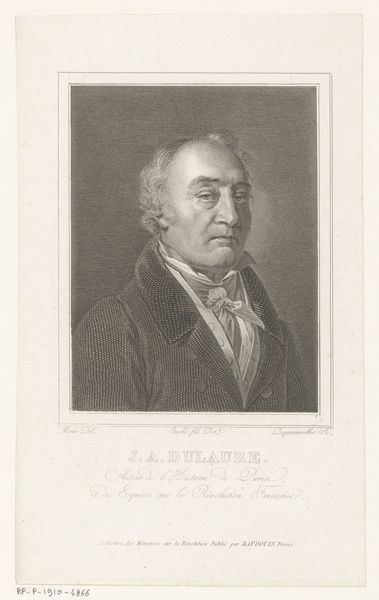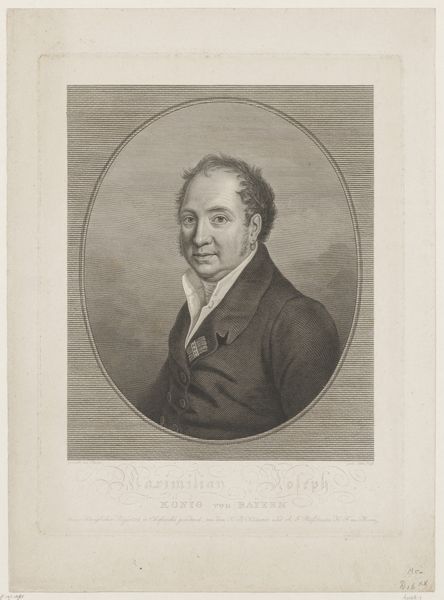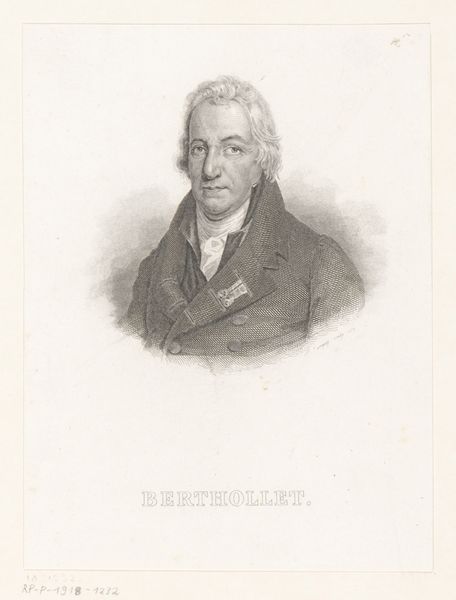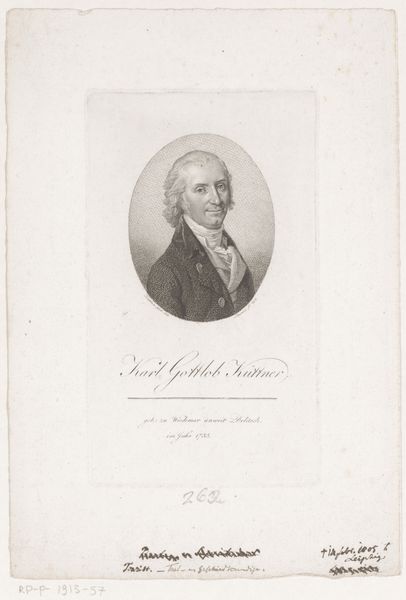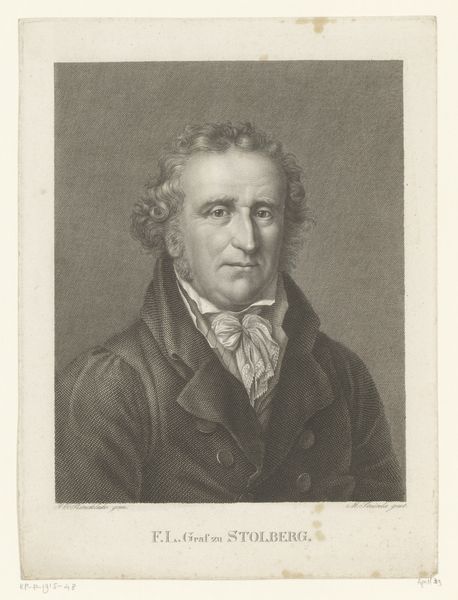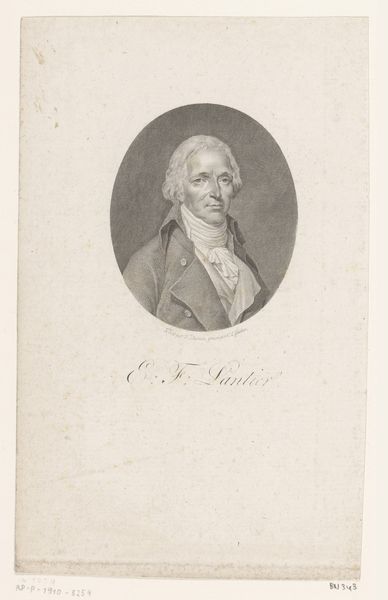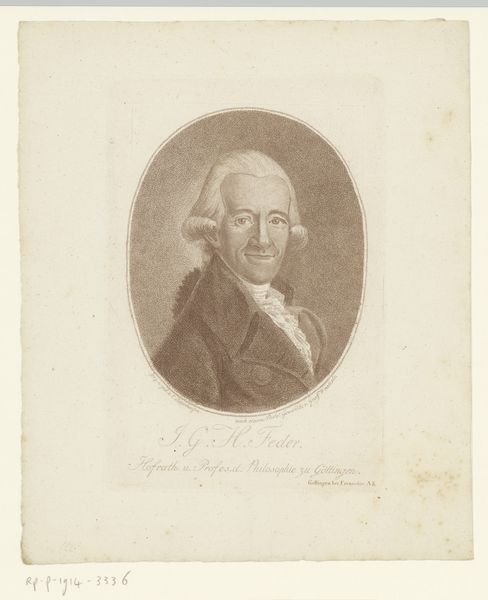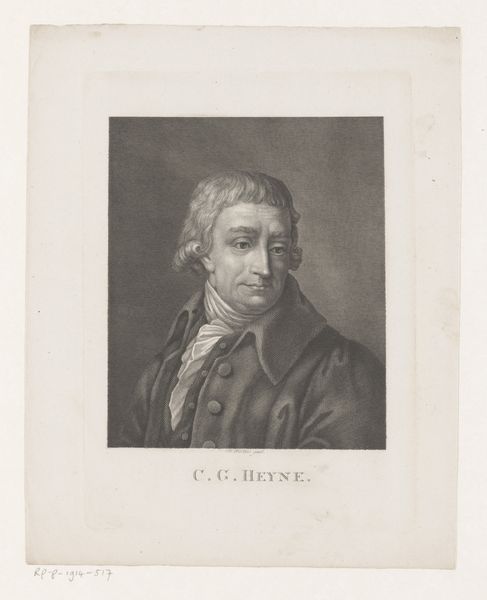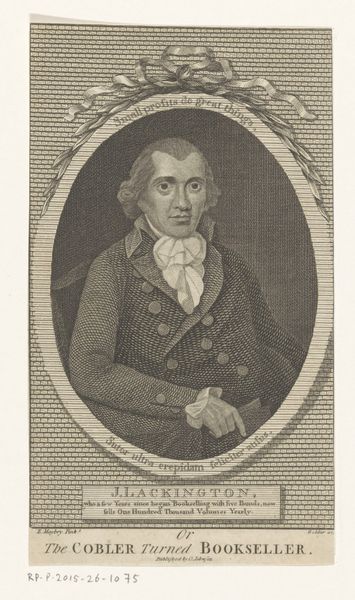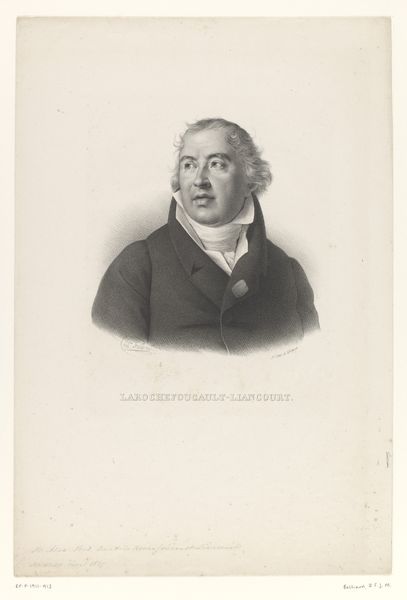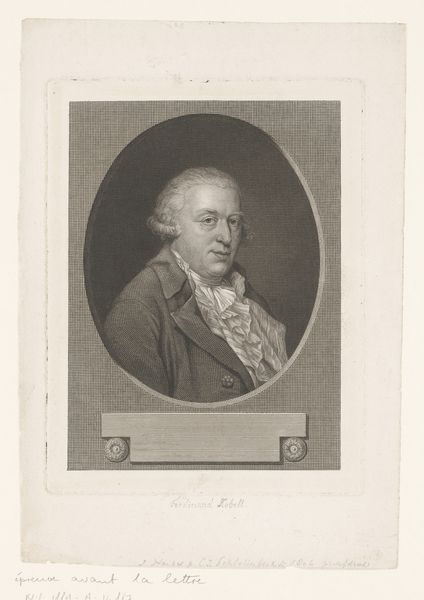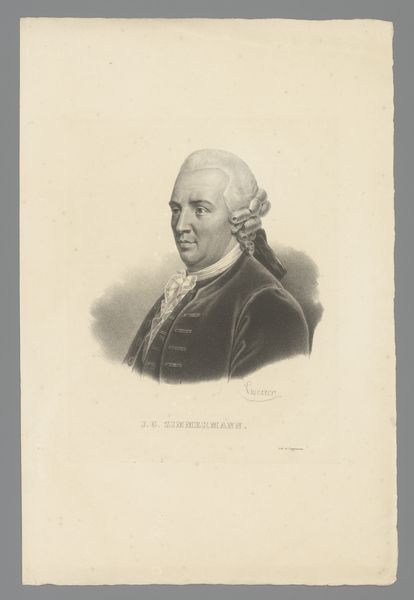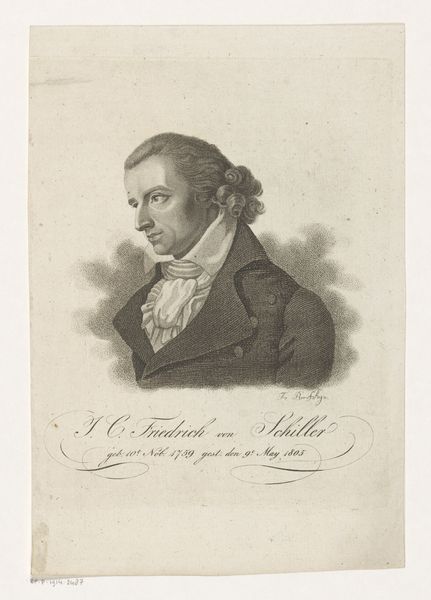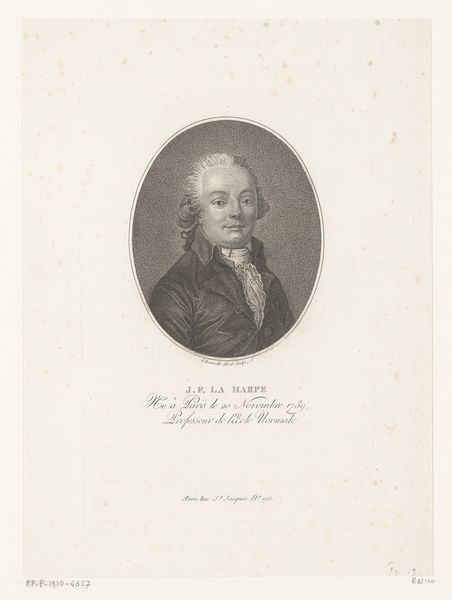
print, engraving
#
portrait
#
neoclacissism
# print
#
19th century
#
line
#
engraving
Dimensions: 75 mm (None) x 65 mm (None) (billedmaal), 101 mm (height) x 71 mm (width) (bladmaal)
Curator: Here we have an engraving titled "K. L. Rahbek," dating from between 1767 and 1824. Editor: My initial reaction is that this work presents a formal and almost stoic representation of the man. It’s a very composed, contained image within that oval frame. Curator: Indeed. The print is an excellent example of Neoclassical portraiture. This was a period that revived interest in classical antiquity, focusing on simplicity, order, and reason in artistic expression. Editor: I notice that Rahbek is wearing a medal of some sort. What does that signify? Curator: That would have likely indicated his membership in an order or society, reflective of his social standing. These medals were crucial in denoting public service or contributions. This would have reinforced his societal importance at the time the image was made and distributed. Editor: Beyond the medal, there is a real restraint in adornment, wouldn't you say? A calculated simplicity in costume and the barest suggestion of a background? It speaks volumes. Curator: Agreed. Neoclassical portraiture aimed to convey character through clarity of line and form. We can also observe the soft modeling of the face. Though understated, the use of the print medium allows for remarkable details. These details contribute to the almost clinical detachment of the artwork. Editor: What’s particularly interesting is that he is facing to the side, an unusual choice that lends him an introspective air. One almost imagines him caught in a private thought. Curator: This posture suggests both self-awareness and the intent to showcase his refined profile, typical for official portraits of that era. Editor: I find myself thinking about what symbols we might be overlooking here, particularly with this presentation of Rahbek in what must have been seen as an authoritative setting. Curator: Well, now I will think about how people might understand power or authority today when seeing images like this. This work becomes evidence of not just how people are remembered, but the society doing the remembering. Editor: A compelling thought to keep in mind.
Comments
No comments
Be the first to comment and join the conversation on the ultimate creative platform.
